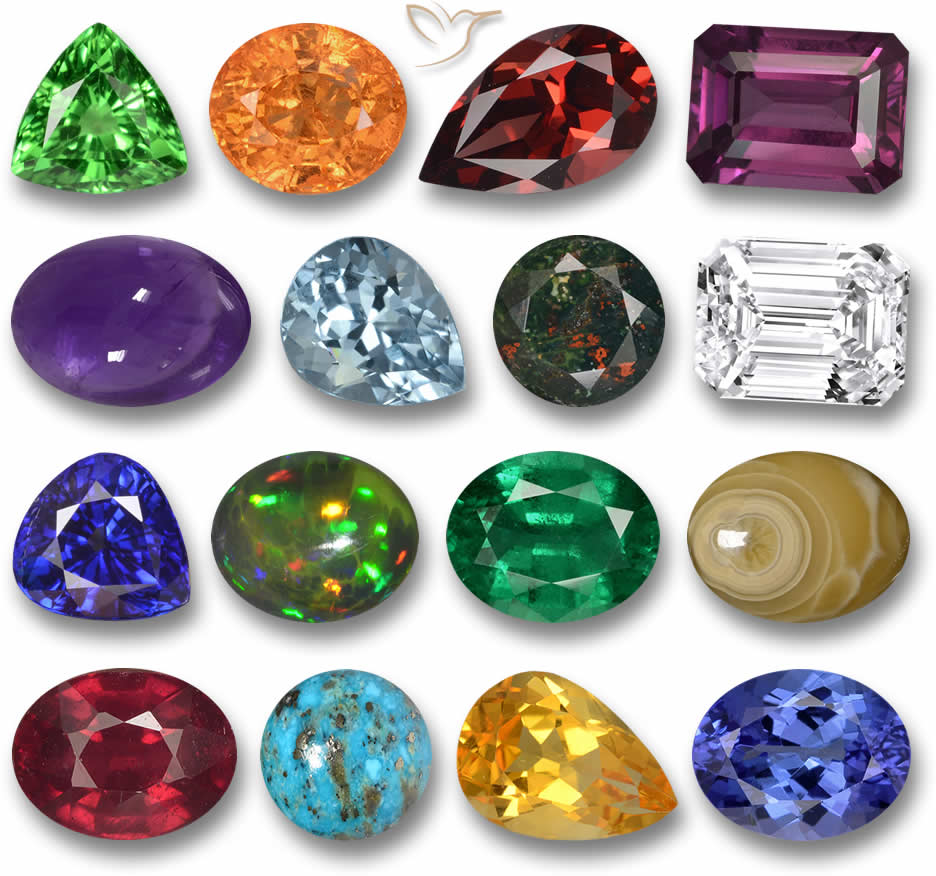Best Gemstones for Specific Projects Like Rings, Pendants, or Earrings
Selecting the right loose gemstone for a jewelry project—whether a ring, pendant, or pair of earrings—requires careful consideration of factors such as durability, size, color, and visual impact. Each type of jewelry places unique demands on the gemstone, from withstanding daily wear to complementing design aesthetics. This article examines the best gemstones for these specific projects, offering guidance for jewelers, hobbyists, and buyers as of April 2025.

Factors in Gemstone Selection
The suitability of a gemstone for a specific jewelry project depends on several key attributes:
- Durability: Measured by the Mohs hardness scale, this determines a stone’s resistance to scratches and wear.
- Size and Shape: Larger stones suit pendants, while smaller cuts fit rings and earrings.
- Color and Clarity: Vibrant hues and transparency enhance visual appeal across all projects.
- Cost: Budget considerations influence gemstone choice, balancing quality and affordability.
Best Gemstones for Rings
Rings endure frequent contact and wear, making durability paramount. Ideal gemstones include:
- Sapphire: With a Mohs hardness of 9, sapphires (especially blue or pink) offer durability and a timeless look for daily wear.
- Ruby: Also at 9 on the Mohs scale, rubies provide striking red color and toughness, ideal for statement rings.
- Diamond: Scoring a perfect 10, diamonds are the ultimate choice for engagement or luxury rings due to their unmatched hardness.
Best Gemstones for Pendants
Pendants, worn close to the chest, prioritize size and visual impact over extreme durability. Recommended gemstones include:
- Emerald: At 7.5-8 on the Mohs scale, emeralds offer rich green hues and are stunning in larger cuts for pendants.
- Amethyst: With a hardness of 7, this affordable purple stone shines in bold pendant designs.
- Tanzanite: Scoring 6.5-7, tanzanite’s unique blue-violet color makes it a standout choice for eye-catching pendants.
Best Gemstones for Earrings
Earrings benefit from lightweight, smaller stones that sparkle and complement facial features. Top choices include:
- Topaz: At 8 on the Mohs scale, topaz (blue or white) provides durability and brilliance in earring settings.
- Garnet: With a hardness of 6.5-7.5, garnets offer deep red tones and affordability for dangling or stud earrings.
- Aquamarine: Scoring 7.5-8, aquamarine’s light blue hue adds elegance to delicate earring designs.
Comparison of Gemstones by Project
The table below summarizes the best gemstones for rings, pendants, and earrings, focusing on hardness, typical size, and cost:
| Gemstone | Best Project | Hardness (Mohs) | Typical Size (Carats) | Cost Range (per carat, 2025) |
|---|---|---|---|---|
| Sapphire | Rings | 9 | 1-5 | $1,000 - $10,000+ |
| Ruby | Rings | 9 | 1-4 | $5,000 - $50,000+ |
| Emerald | Pendants | 7.5-8 | 2-10 | $500 - $15,000+ |
| Tanzanite | Pendants | 6.5-7 | 2-8 | $300 - $1,200 |
| Topaz | Earrings | 8 | 0.5-3 | $10 - $100 |
| Aquamarine | Earrings | 7.5-8 | 0.5-4 | $100 - $500 |
Note: Costs and sizes vary based on quality and market conditions; ranges are indicative.
Conclusion
Choosing the best gemstone for a jewelry project hinges on aligning the stone’s properties with the piece’s purpose. For rings, durable options like sapphires and rubies excel in withstanding wear. Pendants showcase larger, vibrant stones like emeralds and tanzanite, while earrings shine with lighter, sparkling gems like topaz and aquamarine. By considering durability, size, and aesthetic goals, buyers and creators can select gemstones that elevate both function and beauty in their designs.

